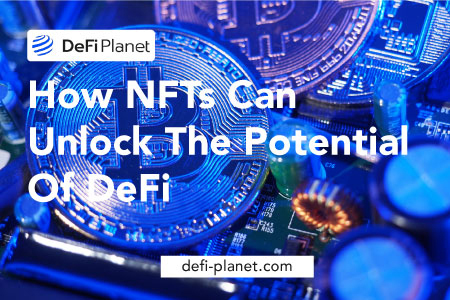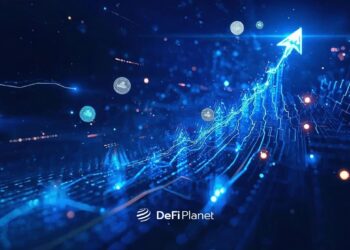Last updated on September 3rd, 2025 at 04:21 am
- NFTs have taken the digital art and collectibles niche by storm. While the first-ever NFT, Quantum was created by Kevin McCoy on May 3, 2014, it was only in 2020 that NFTs caught mainstream attention.
- In 2020 and 2021, several high-profile sales were made which put the NFT space into the spotlight. Digital artists saw their lives changing and many celebrities joined in as they spotted a new opportunity to connect with their fans.
- Beeple’s NFT “Everyday: The First 5000 Days” was sold for a whopping $69.3 million at Christie’s, turning a lot of heads towards NFTs.
- It was then that the niche started getting popular and in 2020, the market value tripled to over $250 million. Since then, the market has continued to grow at a tremendous pace in 2021 with sales exceeding $2 billion in the first 3 months of the year.
What is an NFT?
NFTs are a type of cryptographic tokens that represent ownership of digitally scarce goods such as pieces of art or any other rare collectible item. They are a digital representation of a real-world object that can be bought and sold online.NFTs stand for Non-Fungible Tokens. While we all have some idea about what NFT means, ‘non-fungible would not be present in everyone’s dictionary. So, let’s see what non-fungible really means.
In the world of economics, fungibility is a characteristic that is used to define goods or commodities with interchangeable and indistinguishable individual units. For reference, a non-fungible asset could be a limited edition Pokemon card. Each card has individual properties and hence is treated as a collectible. A card with one type of Pokemon is not the same as a card with a different Pokemon. Even when we consider two cards with the same character on them, many characteristics might differ such as the card’s condition or its year of production. More examples of something non-fungible include real estate or pieces of art. For example, a Van Gogh painting that has only one original copy.
Tokenization of these real-world tangible assets allows them to be traded more efficiently and also increases their liquidity. The non-fungible nature of NFTs is what differentiates them from cryptocurrencies. Because of their uniqueness, they cannot be traded or exchanged 1:1 or at equivalency. In contrast, cryptocurrencies are identical to each other and hence are used as a medium of exchange.
Characteristics of NFTs
Now, having developed a better understanding of NFTs and what non-fungible means, let’s look at some of the most common characteristics of NFTs:
- Unique – Each NFT offers a unique value proposition that is based on its distinct characteristics. They have a unique identifier with different properties that are stored in their metadata.
- Easily Transferable – NFTs are minted on Ethereum and can be bought and sold on any Ethereum-based NFT marketplace. Owners are not locked into any specific platform. Moreover, they don’t need an intermediary to buy/sell an NFT.
- Guaranteed ownership of the asset – Each NFT has an owner. Information is easily verifiable hence you can prove you own it.
- Fraud-Proof – No one can manipulate an NFT in any way.
- Indivisible – Most NFTs available in the market cannot be cut into small fractions.
- Scarcity- NFTs are scarce as they have a limited supply. The creator of an NFT can determine its scarcity. Also, the number of tokens is verifiable on the blockchain, hence they have provable scarcity.
- They allow extra information to be stored in them – Every NFT has extra information stored in them. It is as a result of this extra information that they are able to take the form of art, music, video, title, deeds by way of JPGs, MP3s, videos, GIFs, PDF, and so on.
Why do NFTs have value?
Are NFTs really worth all the hype? Should you consider spending your hard-earned money on buying an NFT? We believe that NFTs are indeed valuable and they are here to stay. While most people may not necessarily understand the technology behind NFTs and how they work, they will still want to buy one.
Why is that so?
What motivates people to buy NFTs are factors that are age-old propellers of consumer behavior. These factors – fandom, royalty economics, scarcity, emotions – create a demand for NFTs and as a result, give them value. NFTs are like art, and similar to art, they have an intrinsic, objective value. Their value is anything that an individual is willing to pay for them and is set majorly by demand.
From NFT To DeFi
Digital art is only one way to use NFTs. We believe that NFTs offer much more utility and can help unlock the potential of DeFi.The NFT and DeFi world is already working together in many interesting ways. Let’s take a look at some of the uses of NFT in DeFi.
1. NFTs as collateral
DeFi lending protocols are majorly collateralized. They let you borrow money using collateral.For instance, if you put 5 ETH as collateral, you can borrow 5000 USDC. This collateral acts as a guarantee that the lender will be paid back in ETH just in case the borrower is not able to pay back the USDC.Not everyone might have enough crypto that they would like to use as collateral. This is where NFTs come in.
NFTs as collateral is an interesting idea and many projects have already started exploring this concept. This would mean that users will be able to supply an NFT as collateral and borrow against it. For instance, let’s say you’re a crypto OG and bought a rare CryptoPunk NFT back in the day. In the current scenario, a CryptoPunk NFT is valued in thousands of dollars. By putting up your NFT as collateral, you can take a loan and if you’re unable to pay back the lender, your CryptoPunk will be sent to the lender.
However, this is not as straightforward as it sounds. When it comes to NFTs, some of them can be illiquid, and thus, their price discovery is tricky. Imagine you bought the CryptoPunk NFT for 5 ETH and later used it as collateral to borrow 5000 USDC, assuming that 5 ETH is worth $2,000 and this NFT has a Loan-to-Value or LTV of 50%. But, what if no one else is willing to buy your NFT? In that case, the market for your NFT becomes illiquid and one can only assume that the NFT is still worth its last selling price. This is where the inaccuracies start creeping into the system as the value of NFTs can change, just like any other asset.
To solve this problem, many DeFi protocols that offer NFT-backed loans use a different model called peer-to-peer loans. In this system, lenders have a choice to accept an NFT as collateral before initializing a loan.
The NFT used as collateral is kept in an escrow contract. In case the borrower defaults on their loan, the NFT is transferred to the lender.
One of the projects that use this model is NFTfi. They allow users to lend and borrow using NFT as collateral.
2. Fractional Ownership
NFT owners or creators can create shares for their NFT. This would enable others to invest in NFT and have fractional ownership.This would unlock the possibility for investors and fans to own a part of an NFT without having to own the entire NFT. For example, investors can own a part of a Mona Lisa and become a shareholder in a Mona Lisa NFT. This would enable them to have a say in things like revenue sharing. Such fractionalized NFTs can already be traded on decentralized exchanges like Uniswap in addition to NFT marketplaces such as NIFTEX.
Other Use Cases
NFTs can also be used to represent more complex financial products in DeFi like insurance, bonds, or options.
They are already being used by protocols like Yinsure from Yearn Finance. yInsure Insurance NFTs provides users with smart contract insurance for various protocols. Here, each smart contract is represented as an NFT. Moreover, these can also be traded on secondary market platforms like Rarible.
Platforms like Rarible have also started exploring DeFi concepts like liquidity mining for NFT projects. For example, Rarible rewards its users with its RARI governance tokens for exchanging NFTs on the platform.
In Conclusion…
- The NFT space is one area in crypto that has garnered significant attention from investors. The NFT space has huge potential and is one of the fastest-growing spaces in the crypto ecosystem.
- The best part about NFTs is that their utility can be as simple as GIFs of digital kittens that are sold as artwork to complex financial products that can potentially help DeFi grow.
- Today, the market activity related to NFTs has skyrocketed and we’re seeing massive growth in the number of active wallets (buyers and sellers).
While digital art is the reason behind NFTs gaining mainstream attention, the evolution of the market will not be limited to just art. We believe that this is just the beginning of NFTs.
- The utility of NFT as technology will increase as more and more users try to incorporate it to enhance the digital experiences of marketplaces, social networks, games, and virtual worlds.
- The evolution of NFTs will also help unleash even more potential for DeFi. Truly, there are unlimited ideas for using NFTs in DeFi and we’re excited to see which projects appear soon.
What do you think about NFTs and their future? Are there any other NFT use cases in DeFi that we might have missed?
If you enjoyed reading this, follow DeFi Planet on Twitter and LinkedIn





















